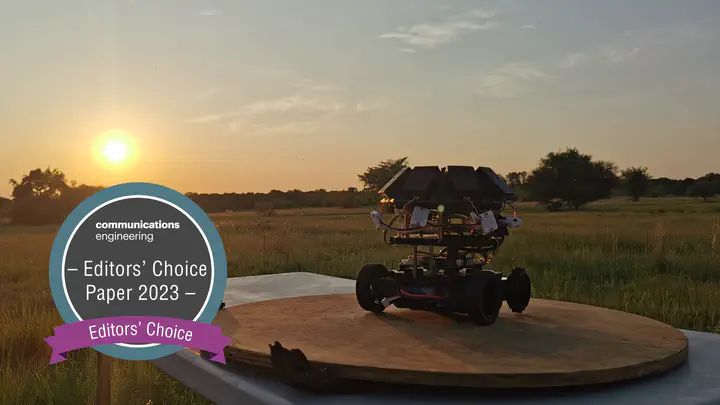Celestial compass sensor mimics the insect eye for navigation under cloudy and occluded skies
 Sensor prototype mounted on robot.
Sensor prototype mounted on robot.
Abstract
Insects use the sun’s position (even when concealed) as a compass for navigation by filtering celestial light intensity and polarisation through their compound eyes. To replicate this functionality, we present a sensor that imitates essential aspects of insect eyes, particularly the fan-like arrangement of polarised light receptors in their dorsal rim area. Our sensor comprises a ring of eight pairs of photodiodes (evaluating two orthogonal orientations of polarised light) to analyse the skylight coming from different directions. Because the layout of our sensor aligns with the polarised light pattern in the sky, a circular-mean model that integrates information spatially across the analysers can estimate the solar azimuth. When using the same sensor design, our model achieves lower compass errors than alternative (and computationally more complex) algorithms, especially under cloudy and occluded skies. Thus, the morphology and processing of the insect celestial compass provide an efficient and robust directional input for navigation.